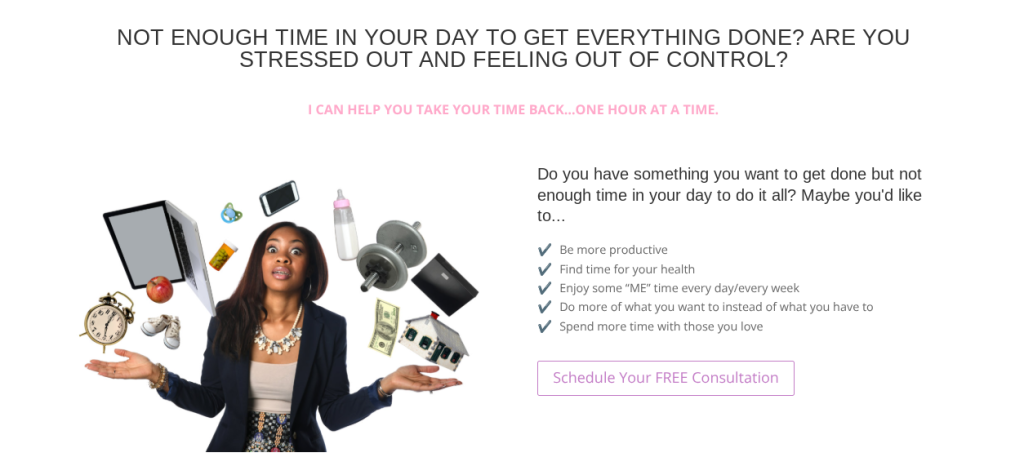If you’re a business owner or someone juggling a million things every day, you’ve probably heard the phrase prioritize your time more times than you can count. But what does that actually mean when everything feels urgent, everything feels important, and everything needs your attention yesterday?
Let’s be real—most of us aren’t slipping up because we’re unmotivated or clueless about how to plan. We’re spinning in circles because we’ve got so many balls in the air that we can’t even see which one we’re about to drop. And trying to decide what task deserves your energy first? It’s kind of like trying to crack a Rubik’s Cube… while blindfolded… in the middle of a fire drill.
Here’s what you need to know: Prioritizing isn’t about squeezing more into your day. It’s about choosing what really deserves your attention and what can sit on the bench for now. You don’t need to overhaul your life. You just need a few tools, a mindset shift, and permission to stop trying to do it all.
Let’s break it down.

Understand What You’re Actually Working With
You can’t put something first if you haven’t spelled out what it actually is. That “I’ve got so much to do” feeling is usually your brain trying to juggle unspoken obligations, open loops, and those little things that are taking up real estate in your head.
So the first step? Get it all out.
Do a full brain dump—write down every single thing floating around up there. Work projects, invoices, emails you haven’t answered, appointments to reschedule, personal errands, that random birthday gift you need to buy… all of it.
This isn’t about organizing anything yet. You just need to see it all. Because when your tasks stay in your head, they multiply and become scarier than they really are.
Once it’s all in front of you, now you can assess what’s real and what’s just noise.
Pro tip: Tools like Trello, Asana, or Monday are great for this. You can drag, drop, label, and see what’s going on visually.
Stop Treating Everything Like It’s a Five-Alarm Fire
Let’s get something straight: urgent doesn’t always mean important.
We fall into the trap of reacting to what’s loudest—usually emails, Slack messages, or whatever’s been sitting in our inbox the longest. Still, scrambling to respond isn’t the same thing as actually setting priorities.
That’s where the Eisenhower Matrix steps in and pulls its weight. You don’t need to be a productivity geek to use it—it’s basically a 2×2 box that asks:
- Is it important?
- Is it urgent?
Tasks that are both? Do those first. Tasks that are important but not urgent? Block time for those. Urgent but not important? Hand them off or delay. Not urgent, not important? Toss ’em or let them go without a second thought.
Even just asking yourself, “Will doing this move me closer to my actual goals?” is a game-changer.
Use the ABC Prioritization Method—And Keep It Simple
If you’re the kind of person who stares at a long to-do list and feels paralyzed, this is for you.
The ABC method is low-tech, high-impact. It goes like this:
- A Tasks: Absolutely must get done today. No debate.
- B Tasks: Important, but not urgent. These can wait a day or two.
- C Tasks: It sounds nice, but nothing falls apart if you skip it.
Let’s say you have ten tasks on your list. Maybe three of them are A-level. Do those first. No exceptions. After you’ve knocked those out, it’s time to shift gears and tackle the Bs. If you don’t get to the Cs, that’s okay.
This method is excellent for ADHD brains because it reduces overwhelm and forces clarity.
And if you want to make it visual, color-code your list. Mark A as red, B gets yellow, and C gets green. Done and dusted.
Pair this with a simple planner or a digital calendar, and you’ll have a solid, stress-free workflow.
The Myth of Multitasking (And Why It’s Sabotaging You)
Time to bury this myth for good: multitasking isn’t boosting your productivity—it’s tanking it. It does the opposite.
Switching between tasks makes your brain reset every time, which drains energy and kills focus. You’re not doing more—you’re just doing more badly.
Stick to one task at a time. Shut out the noise. Pour your focus into what’s sitting right in front of you.
Want a simple strategy? Try time chunking:
- Block out a 60-minute “deep work” session.
- Silence your phone.
- Pick one priority from your list.
- Just work on that.
You’ll be surprised how quickly stuff gets knocked out when you’re not jumping between tabs and chasing every ping from your inbox.
How to Handle the “Everything’s Important” Spiral
We’ve all been there. You glance at your list and tell yourself, “There’s no way I can leave any of this out.”
Here’s the truth: If everything’s important, nothing is.
When you hit that panic spiral, pause for a minute. Stop, breathe, write down three things you must do today. Just three.
Not twenty. Not ten. Three.
This kind of forced focus is powerful. It quiets the mental noise and gives your day direction.
And no, this doesn’t mean you’re dropping the ball on everything else. It means you’re putting your energy where it matters.
Build a Weekly Review Ritual That Keeps You Sane
Without glancing at a map first, you wouldn’t hit the road for a long trip. So why start a new week without checking your direction?
Weekly reviews are a sanity-saving ritual that can take just 20 minutes.
Here’s what to do:
- Review what you completed last week.
- Look at your calendar and meetings for this week.
- Brain dump your new tasks.
- Label them A, B, or C.
- Schedule time for your top priorities.
- Ask yourself: “What would make this week feel like a win?”
Doing this every week helps you catch issues early, make space for big-picture work, and avoid that Monday morning scramble.
Use whatever tool works for you—Notion, Todoist, Google Sheets, or a basic notebook.
Consistency beats fancy every time.
Start Saying “No” Without the Guilt Trip
One of the fastest ways to drain your productivity? Saying “yes” to stuff that doesn’t move the needle.
You’ve got to guard your time like it’s gold—because it is.
That means learning to say “no” without the guilt. And you don’t need to be rude. You need to be clear.
Try these scripts:
- “Thanks for thinking of me! I can’t commit to that right now.”
- “I’m focusing on a few priorities this month—let’s revisit this later.”
- “That’s not something I can take on right now, but here’s where I can jump in.”
Setting boundaries lets you say yes to what deserves your time.
Create a Daily Prioritization Ritual (5 Minutes or Less)
Every morning, before the chaos hits, take five minutes to get grounded.
Here’s the ritual:
- Look at your calendar.
- Check your task list.
- Pick your top 3 for the day (your A tasks).
- Ask: “If I only did one thing today, what would it be?”
It sets the pace for your day and brings focus before the chaos starts creeping in.
Make it part of your morning coffee ritual, or do it before opening your inbox.
The goal isn’t to plan your whole day perfectly—it’s to give your brain a clear starting point.
When You Still Feel Stuck—Give Yourself Grace
Even with the best systems, some days will be messy. You’ll drop balls. You’ll miss deadlines. You’ll freeze and procrastinate.
That doesn’t mean you’ve failed—it just means you’re human.
Moreover, this hits even harder if your brain doesn’t follow the usual playbook. ADHD, anxiety, burnout—they all show up in weird ways. And that’s okay.
The point of prioritizing your time isn’t to become a machine. It’s to create space, clarity, and peace in your day.
So if today didn’t go as planned? Tomorrow’s a fresh start.
Prioritize Progress, Not Perfection
This isn’t about being perfect. It’s about being intentional.
You don’t need to follow some hyper-optimized system with timers and color-coded apps (unless that works for you). You just need to ask, “What matters today consistently?”
When you prioritize your time based on impact—not urgency—you get more done, feel less stressed, and stop spinning your wheels.
So, ditch the guilt. Grab your list. Start with your top three. And remember—you’ve got this.

